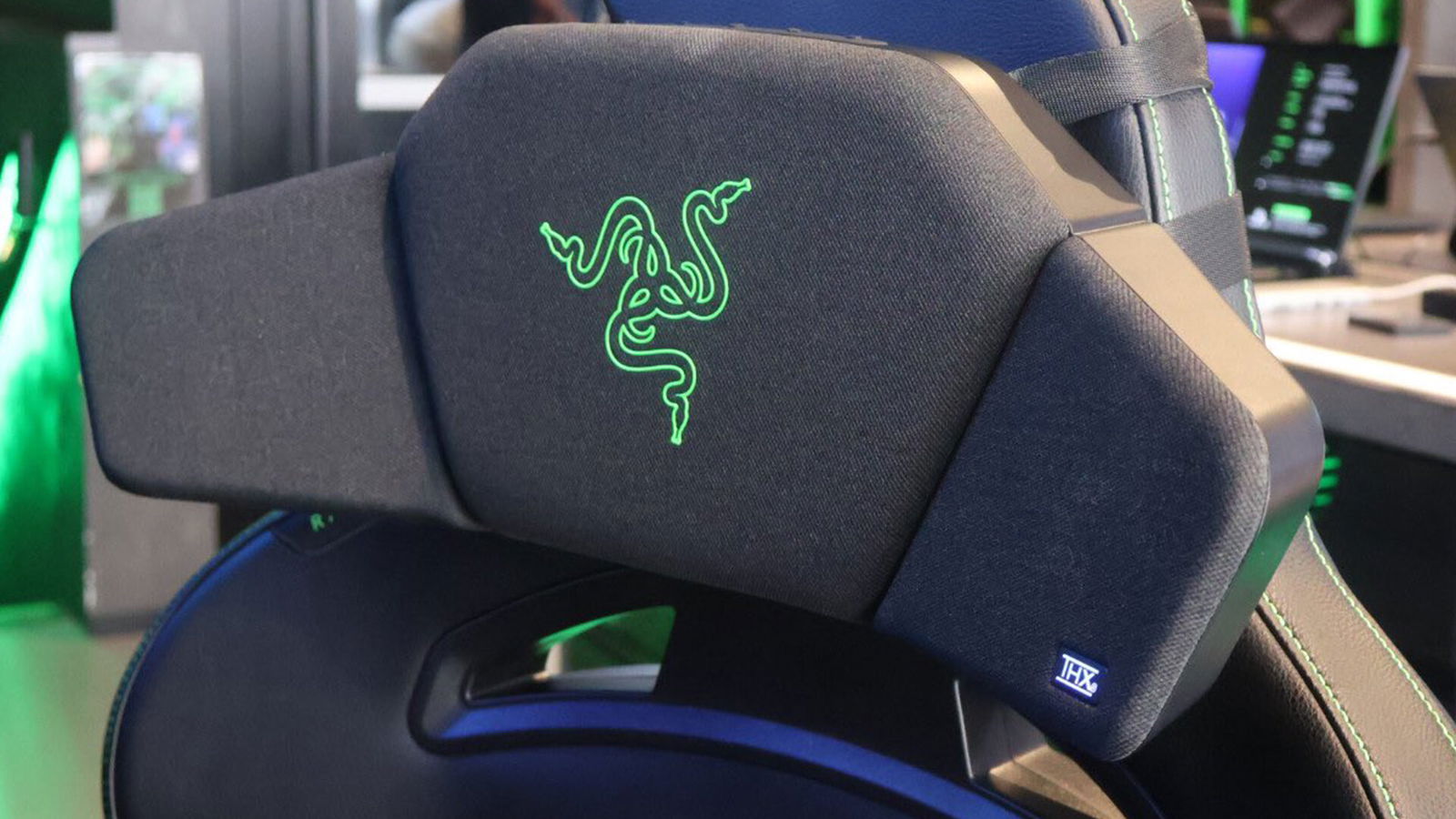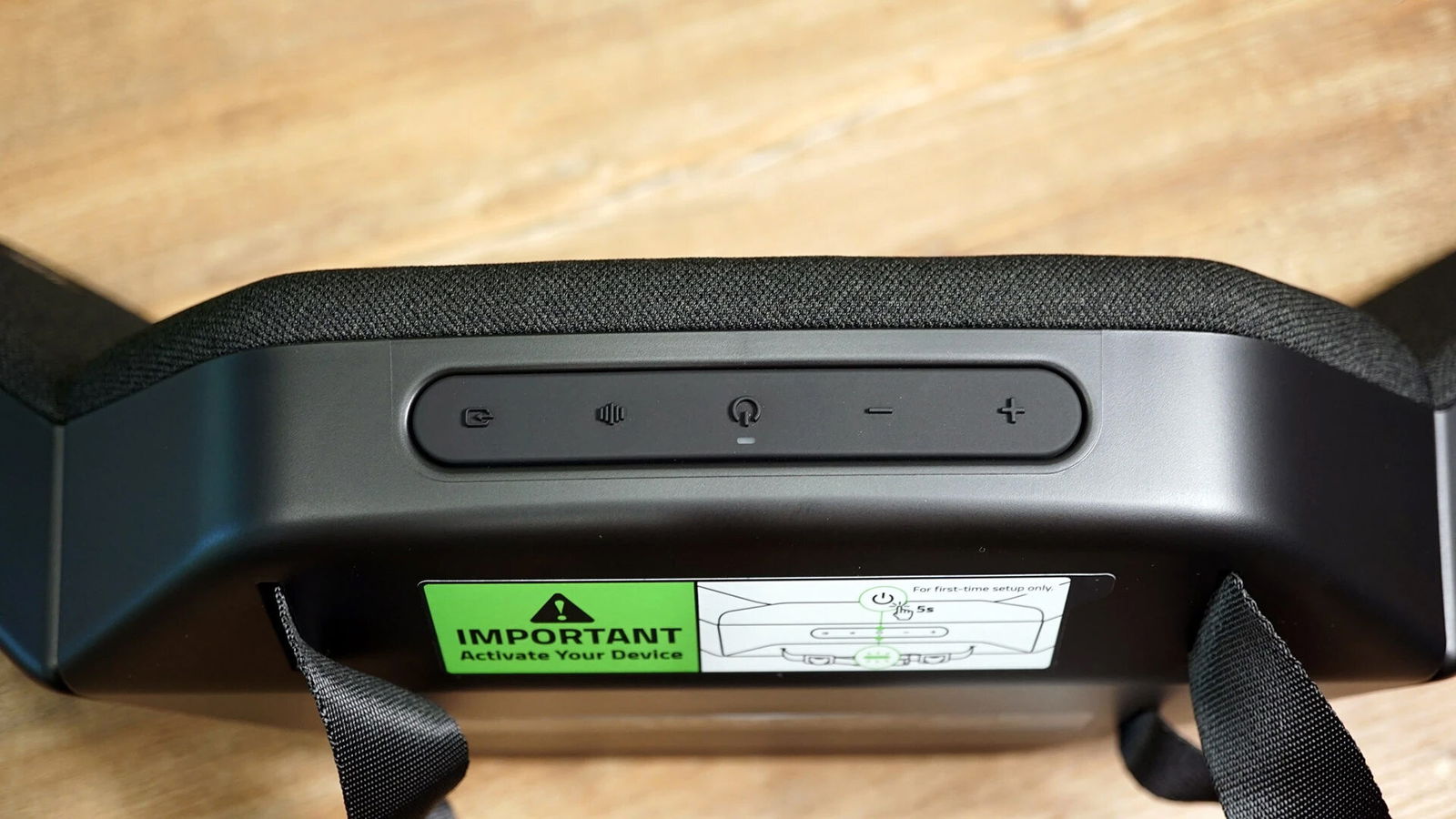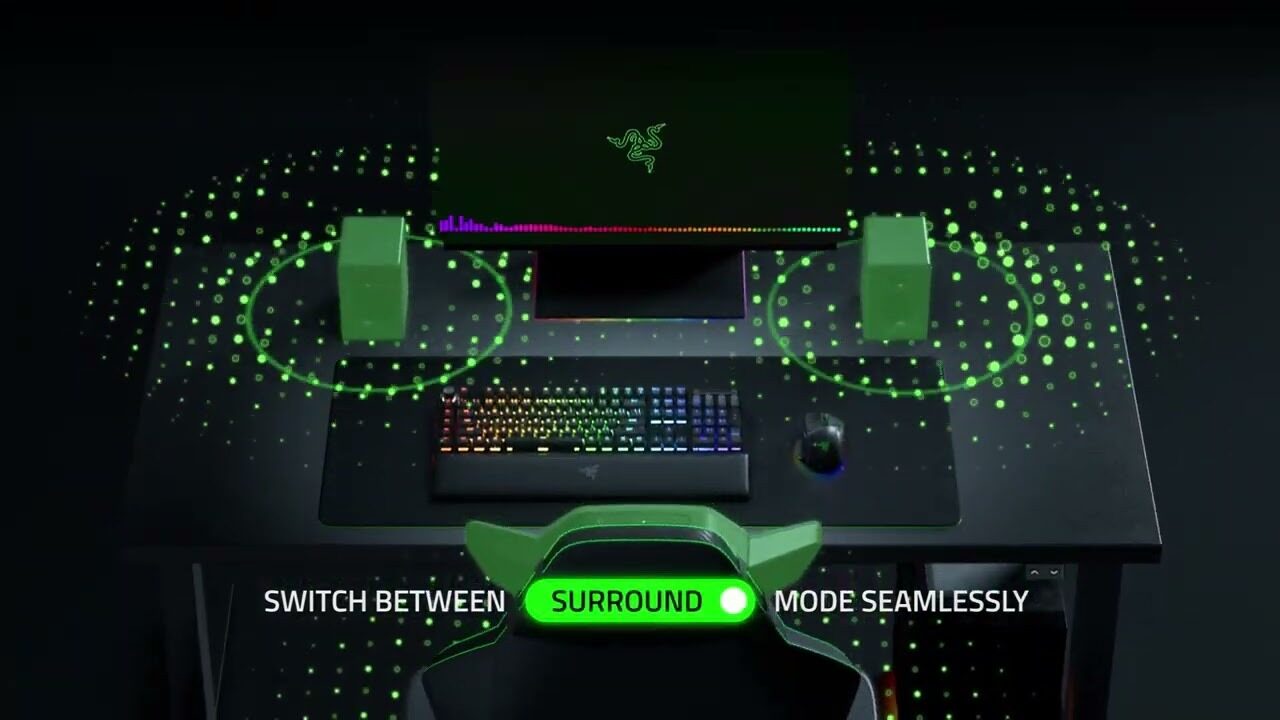The Razer Clio is weird. It’s a speaker, technically, but not the kind you sit on a desk or mount to a wall. This one straps to the back of a chair like a gadget from a racing sim cockpit, settles behind the shoulders, and whispers game audio directly into the skull through a memory-foam cushion that somehow manages to be both tech and comfort. It doesn’t clamp down on the head or bury itself in the ears. It just sits there. And if the setup plays nice with it, the effect is oddly personal—like a dedicated sound bubble that lives with the user, but never gets in the way.
The first thing to understand about the Razer Clio is that it’s not trying to replace a sound bar or studio cans. This isn’t a universal solution, and it wasn’t built for every desk or living room. This is solo tech. It’s for someone parked in front of a PC for hours at a time, maybe with a high-backed chair and a bit too much RGB in the room. The Clio is at its best in that context: one person, one screen, one seat.

Setup is surprisingly painless. No driver installs. No calibration tool that asks a person to spin in a circle with their arms out. Just strap it on, plug in the 2.4GHz dongle or connect over Bluetooth, and it’s ready. There are three built-in EQ modes: Game, Movie and Music. They’re distinct enough to feel useful. Game mode boosts directional cues and low-end punch. Movie mode widens the soundstage. Music mode flattens things a bit and lets vocals breathe. The basics are covered. Razer didn’t overcomplicate this.
“The Razer Clio is weird.”
And credit where it’s due: the sound quality is better than it has any right to be with the Razer Clio. I expected a muffled gimmick. What I got was a wide, clean stereo spread that often tricked me into thinking there were speakers placed around the room. THX Spatial Audio does the heavy lifting here, and while it’s not true surround, it’s convincing enough in games like Call of Duty: Black Ops and Alien: Isolation to sell the illusion. Dialogue is crisp, music carries weight, and the bass hums low without rattling the spine like a cheap subwoofer taped to a pillow. It won’t win over hardcore audiophiles, but it doesn’t need to. It’s tuned for immersion, not analysis.
What really sells it isn’t just the audio; it’s the feeling of the Razer Clio. Not the rumble, not the EQ tricks, but the physical intimacy. There’s no ear sweat. No clamp fatigue. Just a chair and this low-profile cushion purring out sound behind the neck. It’s a little eerie at first, how close it feels—like the game is breathing down your neck. But after a while, that presence becomes comforting. And when a few hours deep into something atmospheric, that closeness starts to feel like part of the experience.

There’s a “but,” and it’s a big one: the chair has to play along. The Razer Clio lives and dies by how well it fits, and it’s clear Razer built this with only certain kinds of chairs in mind. If the backrest is short, narrow, overly plush, or has a floating headrest, forget it. I tried strapping the Clio to my usual ergonomic chair—something soft and high-end with a swivelling neck pad—and it slid down constantly, never staying flush, so it never really worked with my main chair. The result was a buzzy, uneven mess that kept breaking immersion every time I shifted. It was downright unusable.
“Credit where it’s due: the sound quality is better than it has any right to be with the Razer Clio.”
Then I moved it to a stiff old “gamer” chair with a rigid back, and it clicked. Locked in tight. Audio stayed consistent with the Razer Clio. The haptics finally made sense. I could feel low-frequency effects thrum through the seat without buzzing or drifting. This is the version of the Clio that Razer meant to ship, and if a chair happens to match that mould, the whole thing kind of sings.
Battery life hits around the 14-hour mark, give or take, which feels right. It charges over USB-C, plays nicely with Synapse on PC for firmware updates, and powers down automatically when not in use. It’s not trying to be flashy. It’s trying to disappear. And when everything lines up, it does a pretty good job of that.

But the Razer Clio isn’t a slam-dunk accessory. It’s niche. It’s slightly impractical. And it doesn’t have a lot of margin for error. Either the setup is right or it isn’t, and if it isn’t, there’s no workaround. There’s no alternate way to mount it. Still, there’s respect for what the Clio is doing. In a market flooded with wireless earbuds and over-engineered headsets, this feels like a swing in a different direction. Razer looked at the claustrophobic state of personal audio and said, “What if we just didn’t touch your ears at all?” And while the result is imperfect, it’s also unique. There’s nothing else like it, and that alone makes it worth paying attention to.
No, the Razer Clio won’t replace headphones. It’s not supposed to. But if the chair is the right kind, the space is quiet enough, and sore ears are a problem with traditional setups, the Razer Clio opens a new lane. Not better, not worse. Just a little different. And sometimes, different is enough.
It’s not something to recommend to everyone. But for the right user, in the right seat, it’s a revelation. And after a week of letting the Razer Clio quietly thrum through cutscenes, ambient soundtracks and the kind of games that are all vibe and no HUD, it’s hard to want to go back.





